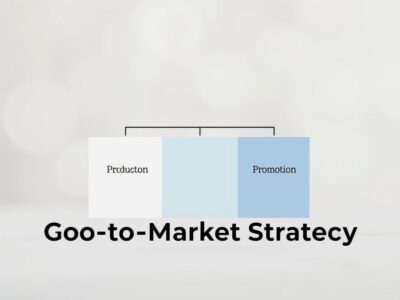In today’s fast-paced business world, staying ahead is key. Companies need to quickly adapt to changing markets and what customers want. Using automation to speed up go-to-market strategies is crucial for firms wanting to keep up.
By integrating automation, businesses can make their processes smoother and more efficient. This lets them focus more on creating new things and connecting with customers. With the latest in artificial intelligence and automation tech, there’s a big chance to make marketing operations better. This ensures they work well and help the business grow.
Key Takeaways
- Automation enhances efficiency in go-to-market strategies.
- Adopting AI technologies can simplify marketing operations.
- Streamlined workflows lead to improved customer engagement.
- Companies must adapt to changing market dynamics to maintain competitiveness.
- Optimizing processes is crucial for driving business growth.
- Automation tools are essential for modern marketing success.
Understanding Go-to-Market Strategies
Go-to-market (GTM) strategies are plans for launching new products or services. They help companies reach their target customers well. Implementing effective strategies brings benefits like better market position, competitive pricing, and teamwork across departments. These strategies are key in helping a company reach out and satisfy its audience’s needs.
Definition and Importance
A go-to-market strategy is like a guide for launching products that customers will love. It’s all about making a connection, driving sales, and keeping customers happy. The goal is to engage with people in ways they appreciate.
Key Components of Effective Strategies
The main parts of a strong GTM strategy include:
- Market Fit: This is about making sure your product meets customer needs.
- Sales Channels: It involves finding the best ways to reach buyers.
- Targeted Marketing Campaigns: This means creating ads aimed at specific groups.
When these elements work together, companies can confidently face competition.
Common Challenges in Execution
However, creating a GTM strategy can have its problems. Sometimes, marketing efforts are scattered and resources are tight. This is especially tough for companies without a clear plan. Without a solid strategy, companies might miss big chances.

The Role of Automation in Go-to-Market Strategies
Automation is key in changing go-to-market strategies for the better. It makes processes smoother and reduces the need for manual work. This boosts operational efficiency. It also means teams can focus more on big-picture projects.
Streamlining Processes and Workflows
Automation cuts unnecessary steps in business operations. Automated tools like email marketing and customer management systems help with better campaign planning and execution. This ensures messages reach the right people at the right time.
Data-Driven Decision Making
Using data smartly in go-to-market (GTM) strategies lets companies quickly adapt to market shifts. Adding real-time analytics to marketing boosts understanding of customers and improves lead generation. Firms analyzing customer behavior through automation see a rise in interested customers. Good data reading leads to smarter strategies and more sales.
Enhancing Team Collaboration
Automation helps teams across departments work better together. Marketing and sales can align their strategies, working as one unit. This leads to a more consistent push in GTM efforts. Integrated workflows and communication improve teamwork and productivity. Learn more about automation’s role in teamwork here.
Tools and Technologies for Automation
Choosing the right tools and technologies is key for boosting go-to-market strategies. There are many options on the market aimed at making marketing tasks easier and improving how we manage customer relationships. We’ll look at popular automation platforms, compare CRM solutions for GTM, and delve into marketing automation tools that help create successful campaigns.
Popular Automation Platforms Overview
There are numerous platforms that help with marketing automation and customer relationships. Top solutions like HubSpot, Salesforce, and Marketo offer features that make things smoother. They fit well with systems teams already use, helping manage campaigns more efficiently and saving time and resources.
Comparison of CRM Solutions
There are different CRM solutions for GTM that meet various business needs. They provide a variety of features. Below, a table shows key features of top CRM options:
| CRM Solution | Key Features | Best Suited For |
|---|---|---|
| Salesforce | Customizable dashboards, advanced analytics, automation tools | Large enterprises |
| HubSpot | Inbound marketing tools, user-friendly interface, integration capabilities | Small to medium-sized businesses |
| Zoho CRM | Multi-channel support, AI features, affordability | Startups and budget-conscious companies |
Marketing Automation Tools to Consider
Using the right marketing automation tools can boost lead generation and engage customers. Tools like Mailchimp for emails, Hootsuite for social media, and Pardot for B2B leads are beneficial. Choosing the best tools for automation strategies helps in better connecting with prospects and customers, leading to improved results.

Best Practices for Implementing Automation
Adding automation to your market strategies needs careful planning. It’s key to use best practices when you bring in automation. This helps get the most from this tech. Make sure to set clear goals, track progress with measurements, keep learning, and be ready to change with new market trends.
Setting Clear Goals and KPIs
It’s vital to have KPIs for automation. They help track how well things are going and if you’re succeeding. By setting clear goals, you know how to judge automation’s effect. This step includes:
- Defining specific targets for setting up automation.
- Using data analysis to pick important metrics.
- Checking regularly how you’re doing against these KPIs.
Ensuring Team Readiness and Training
For automation to work well, your team needs to be prepared. Investing in training helps them handle new tools better. This involves:
- Checking current skills and finding what’s missing.
- Offering ongoing learning and support.
- Encouraging a culture that’s excited about using automation tech.
Continuous Improvement and Adaptation
It’s important to keep improving to make sure you stay ahead with automation. Businesses should always check and tweak their methods to keep up with new tech and market changes. To do this effectively, consider:
- Asking team members what they think about the automation processes.
- Having regular check-ups of automated systems.
- Making changes based on what the data and performance tell you.
| Best Practice | Description | Benefits |
|---|---|---|
| Clear Goals | Define objectives for automation implementation. | Enhanced focus and measurement of success. |
| Team Training | Equip staff with skills to leverage automation tools. | Increased efficiency and reduced errors. |
| Continuous Improvement | Regularly update processes based on performance data. | Enhanced adaptability to market changes. |
Case Studies: Success Stories in Automation
Looking into automation success stories, we see how businesses have used it to boost their market strategies. For example, HubSpot utilized automation in its CRM and marketing, which greatly increased customer interaction. This led to more customers making purchases, proving automation’s worth in making user experiences better.
These case studies teach us the value of planning and training. Companies like Salesforce showed that getting employees fully ready and setting clear goals boosts automation’s benefits. This helps everyone work better together and makes operations run smoother. These lessons from top companies give a guide for businesses wanting to improve their automation approaches.
Automation’s role in growing income is huge. Studies indicate that businesses using automation see higher earnings due to better pipeline management and reaching more of the market. A prime example is Adobe, whose automated marketing greatly increased the number of potential customers. This shows strong ties between using automation well and having better financial results.
FAQ
What is automation for go-to-market strategies?
Automation for go-to-market strategies uses tech to make marketing, sales, and product jobs easier. This helps get products or services to customers faster.
How does automation enhance efficiency in go-to-market processes?
Automation takes over repetitive jobs like analyzing data and talking to customers. This lets teams work on big ideas, which makes introducing products smoother and aligns efforts better.
What are the key components of effective go-to-market strategies?
Effective strategies need a good fit with the market, choosing the best sales channels, and targeted marketing campaigns. These campaigns must meet the audience’s specific needs.
What common challenges do companies face when executing go-to-market strategies?
Companies often deal with uncoordinated marketing, not enough resources, and no set plan. This can make them miss chances in the market.
What types of tools can assist in optimizing go-to-market strategies with automation?
Marketing automation, customer relationship management (CRM), and data analytics tools can greatly improve go-to-market strategies.
How can I assess the effectiveness of automation in my GTM strategy?
To check if your automation is working, set clear goals and measurable KPIs. These help in seeing how well automation supports your market strategies.
Why is team readiness important for successful automation implementation?
It’s important for team members to know how to use automation tools well. This ensures you get the most out of automated go-to-market strategies.
Can you provide examples of companies that have succeeded with automation in their go-to-market strategies?
Many leading companies have used automation to get better results. They’ve seen more conversions, better customer engagement, and wider market reach.



